Restoring giant underwater forests, one blade at a time
In New Zealand, rebuilding these kelp ecosystems is a community effort

Giant kelp form large forests in coastal waters. Like trees, these algae can pull carbon out of the environment. As such, they make promising climate-change warriors.
Douglas Klug/Moment/Getty Images Plus
Share this:
- Share via email (Opens in new window) Email
- Click to share on Facebook (Opens in new window) Facebook
- Click to share on X (Opens in new window) X
- Click to share on Pinterest (Opens in new window) Pinterest
- Click to share on Reddit (Opens in new window) Reddit
- Share to Google Classroom (Opens in new window) Google Classroom
- Click to print (Opens in new window) Print
This is another in our series of stories identifying new technologies and actions that can slow climate change, reduce its impacts or help communities cope with a rapidly changing world.
A cold, damp lab in Wellington, New Zealand, houses a nursery of sprouting seaweeds. These babies are brown dots about the size of crushed peppercorns. Growing on rocks, they’re submerged in big basins of seawater that smell of fish and salt. Water filters hum in the background as the babies gently sway in basins that tilt from side to side. Tipping buckets splash them with waves of water. Designed to mimic conditions at sea, this nursery aims to ready the babies for the ocean they will one day call home.
Big hopes abound for these little ones.
Giant kelp, these babies will grow into massive brown macroalgae. Much like trees on land, this species forms large forests in deep waters. Their towering stemlike stipes and long leaflike blades spread out to create dense, floating canopies. Those canopies provide food and an “immense, three-dimensional habitat that’s extremely important for many marine vertebrates and invertebrates,” says Christopher Cornwall. A marine botanist, he works at the Victoria University of Wellington.
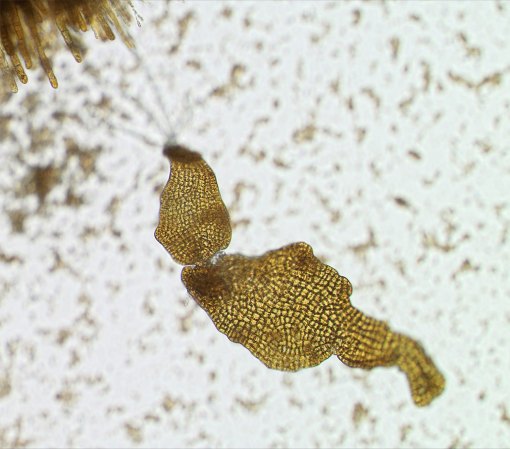
Giant kelp anchor their ecosystem. They’re culturally important too. For Māori, the Indigenous people of New Zealand, seaweeds continue to be a sustainable food source. In the past, baskets of dried seaweed were traded for preserved birds. Today, bowls of seaweed are served during gatherings. Māori also use kelp to create bags for preserving and transporting food. The skill of making these traditional bags is passed down through generations.
But climate change has put the giant kelp at risk. Already, their numbers are dwindling. That’s where the seaweed nursery comes in. Located at the National Institute of Water and Atmospheric Research (NIWA), it’s part of the Love Rimurimu project. “Rimurimu” means seaweed in the Māori language.
Love Rimurimu aims to restore giant kelp in the coastal waters off Wellington, the capital of New Zealand. Along with scientists, the team is finding ways to cultivate seaweed babies in the lab and to plant them at sea. But they’re also engaging the community to monitor kelp health.
Much like the seaweeds that moor their ocean ecosystem, the project anchors a whole community. Together, these “kelpers” are working to rebuild underwater algal forests.
Promising climate-change warriors
Giant kelp (Macrocystis pyrifera) are one of the fastest-growing organisms on Earth. They can grow as much as 50 centimeters (20 inches) per day. As their name says, they’re giants that can reach heights of 50 meters (160 feet). That’s about half as long as a football field or soccer pitch.
Their gigantic size and rapid growth allow them to absorb huge amounts of carbon dioxide (CO2) through photosynthesis. Researchers estimate that seaweeds around the world could sequester, or lock up, as much as 173 million metric tons of CO2 each year. That’s nearly as much as the entire emissions of the state of New York!
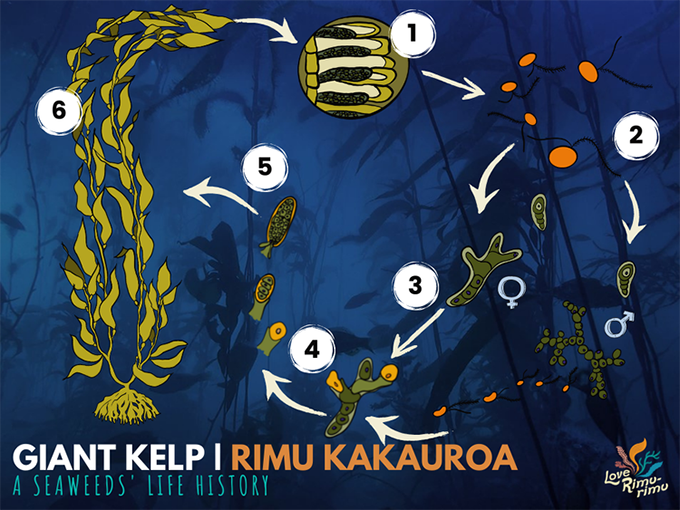
More studies are needed to measure just how much CO2 seaweeds absorb and how they compare to land-based forests. But given their impressive growth rate and ability to act as natural carbon sinks, seaweeds have the potential to help fight climate change. They might even help counter some of its harmful effects. For example, seaweeds “can make seawater more alkaline,” Cornwall says. “And that could protect some organisms from ocean acidification.”
But giant kelp are dying off. In New Zealand’s North Island, Wellington is “one of the last places left where the species is still alive,” says Siddharth Ravishankar. He’s a marine aquaculturist. He’s part of the Love Rimurimu team. The kelp’s decline stems from a triple threat.
The first is warming oceans. Marine heat waves can harm seaweeds. Extreme heat stresses giant kelp, especially. Prolonged heat could kill it.
An influx of sediments poses the second peril. Sediments can be bits of rock, sand and other matter that wash into the sea. Farming, building near a coast and other human activities can foster erosion. So can the more intense rains and storms driven by climate change. Both wash more sediment into the sea.
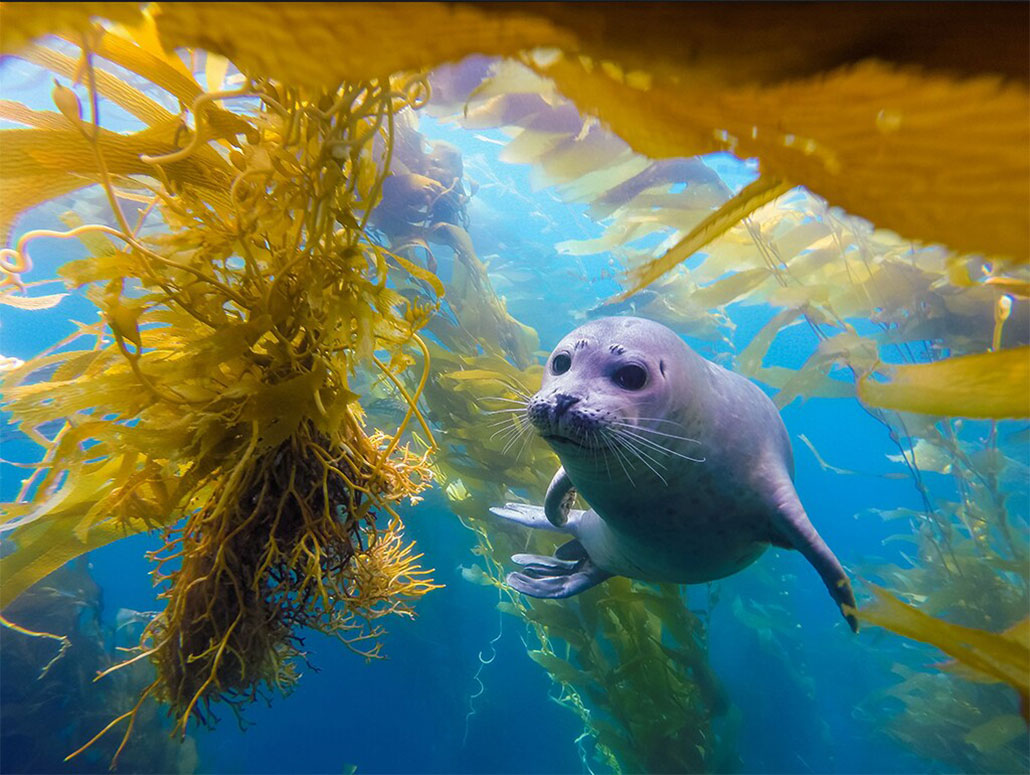
When suspended or swirling in coastal waters, these sediments will blunt how much sunlight gets through. Scientists call this “coastal darkening.” Without enough light, seaweeds can’t perform photosynthesis at peak rates. That limits their food supply and stunts their growth.
Overgrazing by sea urchins strikes the third blow. Sea urchins bite a chunk off the seaweed’s rootlike anchor. That allows the rest to detach from a rock and float away, explains Ravishankar. Normally, fish help keep urchin populations in check. But overfishing has allowed urchin numbers to rise.
Overgrazing turns seaweed forests into barrens, Cornwall says. They leave behind “no fleshy seaweeds — just the pink algae that grow on the rocks.”
Stressed-out seaweeds
To help offset these negative effects, the Love Rimurimu team is racing to return kelp forests to the coasts. The babies growing in its nursery will be replanted in the ocean. Once those little kelp sprout from their rocks, they’ll be moved from their big basins to the open seas.
The team starts by collecting adult seaweeds in the wild. The kelp’s blades have darker patches containing spores. These microscopic cells have tiny filaments for swimming and racing around. Once they mature, they’ll produce sperm and eggs.
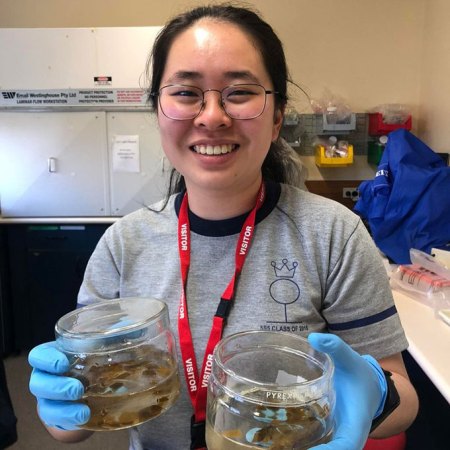
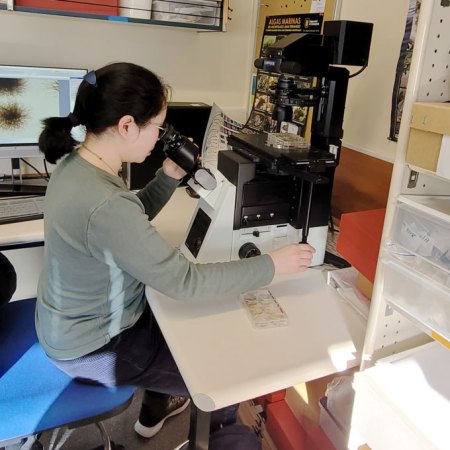
These spores number in the “thousands or millions,” says Yun Yi Kok. A marine biologist on the Love Rimurimu team, she studies the early growth of macroalgae, such as kelp.
Kok cuts the kelp patches into smaller pieces, then dries them on paper towels. Later, she dunks them again into jars of seawater. This stresses out the kelp — on purpose.
That stress triggers the plant to release its spores into the water. Kok moves the “spore soup” into petri dishes. Some spores are stored under red light to stop them from developing further. They can be kept for future regeneration. Other spores get to mature. Male spores release sperm that fertilize female eggs and lead to baby seaweeds.
Ravishankar nurtures these babies in the lab. He seeds them onto rocks and allows them to attach. This technique is called “green gravel.”
Once the kelp blades reach at least two centimeters (or three-quarters of an inch) tall, they’ll be planted in the sea.
From teeny to tall
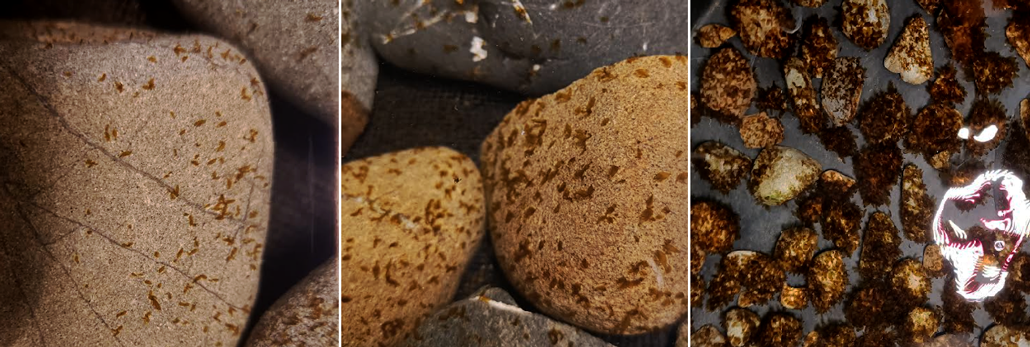
Baby giant kelp are seeded onto rocks to grow in the lab (left). This technique is called “green gravel.” After one week (middle), the seaweed babies are starting to grow leaflike blades. They’re about the size of crushed peppercorns. Next (right), seaweed blades will be tied to individual rocks with a string. These rocks will then be tucked into cracks and crevices at the ocean floor. As the blades grow, they’ll outgrow the rock and anchor themselves to the underlying reef.
NIWA’s seaweed nursery houses around 350 rocks, each with about 50 attached kelp blades. Before bringing them to the sea, the researchers separate the blades and tie each to its own rock with a string. This increases each baby’s chance of survival.
“When you get too many individuals on a single rock, eventually a few of them will outcompete the rest,” explains Ravishankar. During planting, the babies’ rocks will be tucked into cracks and crevices in the ocean floor. As the kelp blades grow, they’ll anchor themselves to the underlying reef.
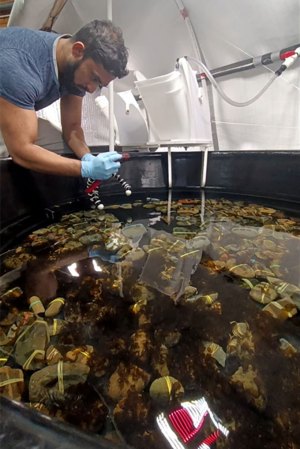
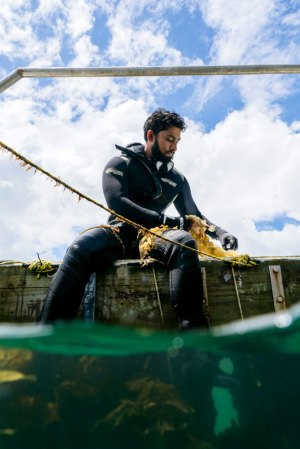
Fighting underwater deforestation
The green-gravel technique is already being tested elsewhere. Projects across Australia, Europe, North America and South America are using it to bring seaweed forests back to life.
In Norway, for example, kelp-bearing rocks grew well at a small site of degraded reef. And trials with golden kelp (Laminaria ochroleuca) took hold along Portugal’s coast and in the Baja California region of Mexico.
This method doesn’t work well where currents are strong or waves are high. A team at the University of California, Irvine learned this the hard way. A storm rolled away all the rocks they had set out hosting giant-kelp babies.
In 2022, the Love Rimurimu team planted giant kelp at a pilot site at Mahanga Bay in Wellington. The two-centimeter (0.8-inch) seaweed babies successfully grew into two-meter (6.6-foot) seaweed teens within a span of six months. This year, though, the giant kelp that the team collected had fewer and lower-quality spores. They grew slowly in the lab.
Under good conditions, blades can emerge in as little as seven days, Ravishankar says. “This year, it took months.”
That delayed how quickly scientists could move the seaweeds to sea. The team had planned to do it during New Zealand’s winter months of July and August. Instead, they planted them in spring, during early September.
As the UC Irvine team found, coastal conditions also affect the success of regrowing underwater forests. Both Kok and Ravishankar suspect that hotter temperatures might be partly to blame.
Like much of the world’s oceans, Wellington’s waters hit warmer than normal temperatures earlier this year. Maybe the seaweeds were too “stressed with the heat waves during the summer,” Kok says. “Ocean warming can affect their growth and the quality of their spores.”
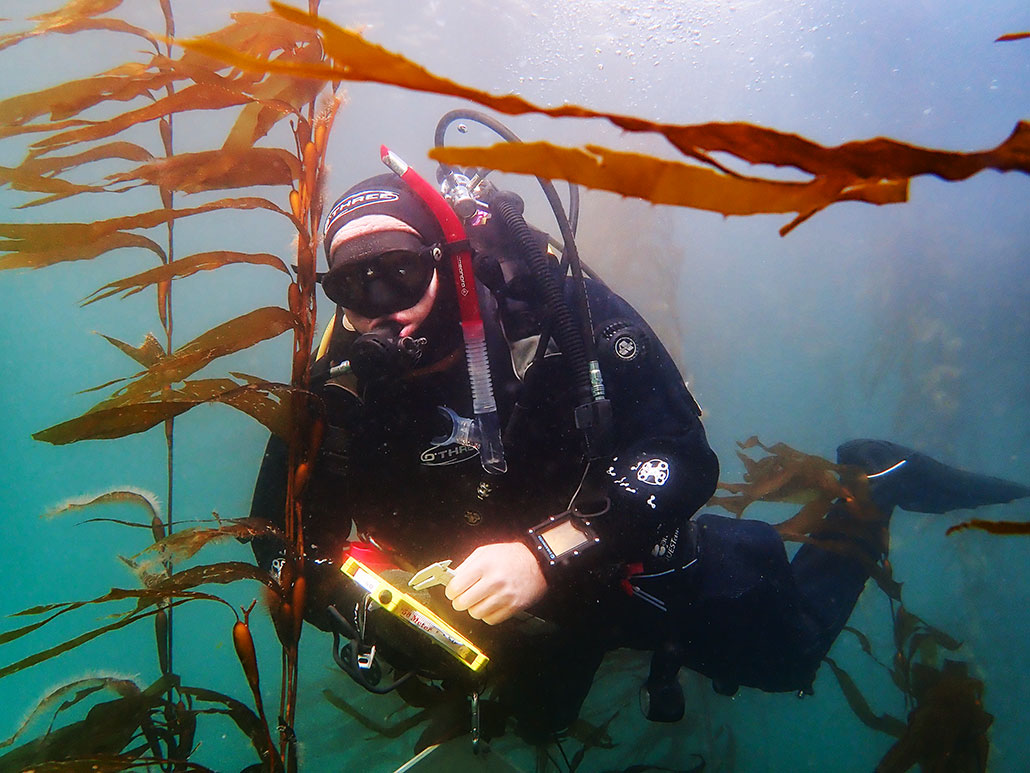
These long-term climate-change impacts are what scientists at the Victoria University of Wellington are studying. These partners of Love Rimurimu hope to learn how sedimentation, heat waves and ocean acidification affect kelp growth.
At the university’s Coastal Ecology Lab, Cornwall and his students expose giant kelp to high temperatures to mimic heat waves. They’re testing the impacts of how long, how strong, how often and how fast a heat wave comes on. Then they gauge how well the algae adapt to these such conditions.
Those studies are still underway. But so far, it looks like longer heat waves cause more harm to the kelp.
“We want to know how these giant kelp will be impacted,” Cornwall says. Some may survive better than others. These could be “individuals we could take and selectively breed in the future.” For example, kelp able to tolerate higher temps and low light might help anchor hardier underwater forests.
Community ‘kelpers’
Akin to the seaweeds it’s trying to save, Love Rimurimu is tethering an ecological community — one that includes people. More than just science, restoration projects need to have people at their core, says Zoe Studd. She leads the Love Rimurimu project. People are “what drives the social change to improve the environment or take action.”
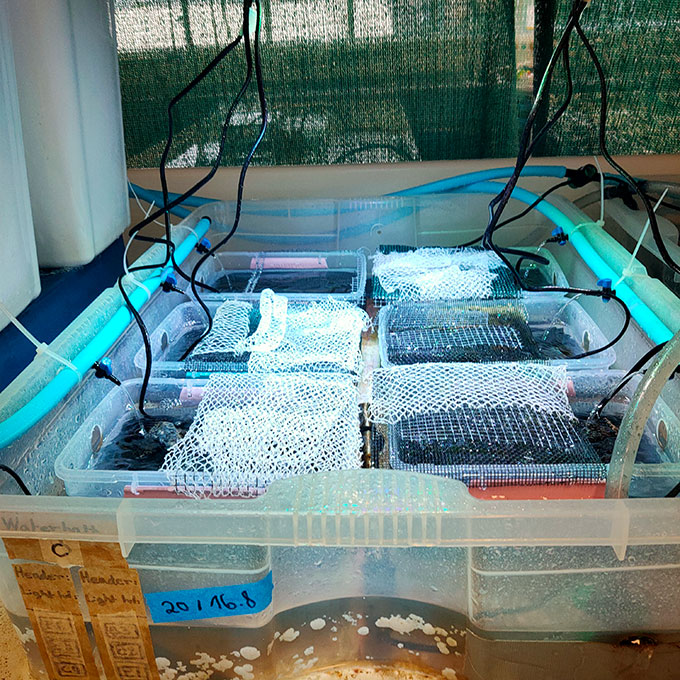
Her team has partnered with Taranaki Whānui. This Māori tribe is the traditional guardian of Wellington’s lands and coasts. Lee Rauhina-August represents the tribe and serves as Love Rimurimu’s Māori adviser.
The scientists consult with her and the tribe about possible culturally important restoration sites. Such sites may have traditional names that point to where seafood was abundant. Or, they might be favorite fishing grounds of the tribe’s ancestors. Love Rimurimu also is working with Rauhina-August and the tribe to consider traditional methods for planting seaweeds. For example, Māori use a lunar calendar that guides when they fish or plant.
For help, Love Rimurimu turns to its “kelpers.” These trained volunteer divers track the growth and health of planted giant kelp. The original “kelpers” were kids and teens from Love Rimurimu’s partner schools. Earlier stages of the project had focused on ocean studies. A yearlong program taught students about seaweeds. Here, they learned how to identify different species, why they’re important and threats to their survival.
That focus on kelp forests was intentional. The Love Rimurimu team felt that kelp deserved as much awareness as fish and the other sea species. “We usually look at the creatures living in the forest,” says Studd. Here, she notes, “We wanted to put our attention on the forest itself.”
An annual version of the sea-studies program continues today. Students take part in a range of tasks. They create maps of restoration sites and present them to Taranaki Whānui. They weave harakeke baskets for transporting seaweed babies from the lab to planting sites. Harakeke is a native New Zealand flax plant of great cultural significance to Māori. The students learn how to monitor planted seaweeds. They can even take snorkeling trips to gather seaweeds and cooking classes to turn their harvest into food.
Sometimes it’s “cold, slimy work,” Studd admits. But the kids have fun and are engaged in the kelp restoration.
“Students are very much at the heart of the journey,” she adds. “Our hope is that as some of these young people graduate and think about what they might do, marine science is one of them. And perhaps some of them will be helping us out in the lab in due course.”
With such a “kelping” hand from scientists, kids, teens and the community, the future of seaweed restoration here looks bright.







